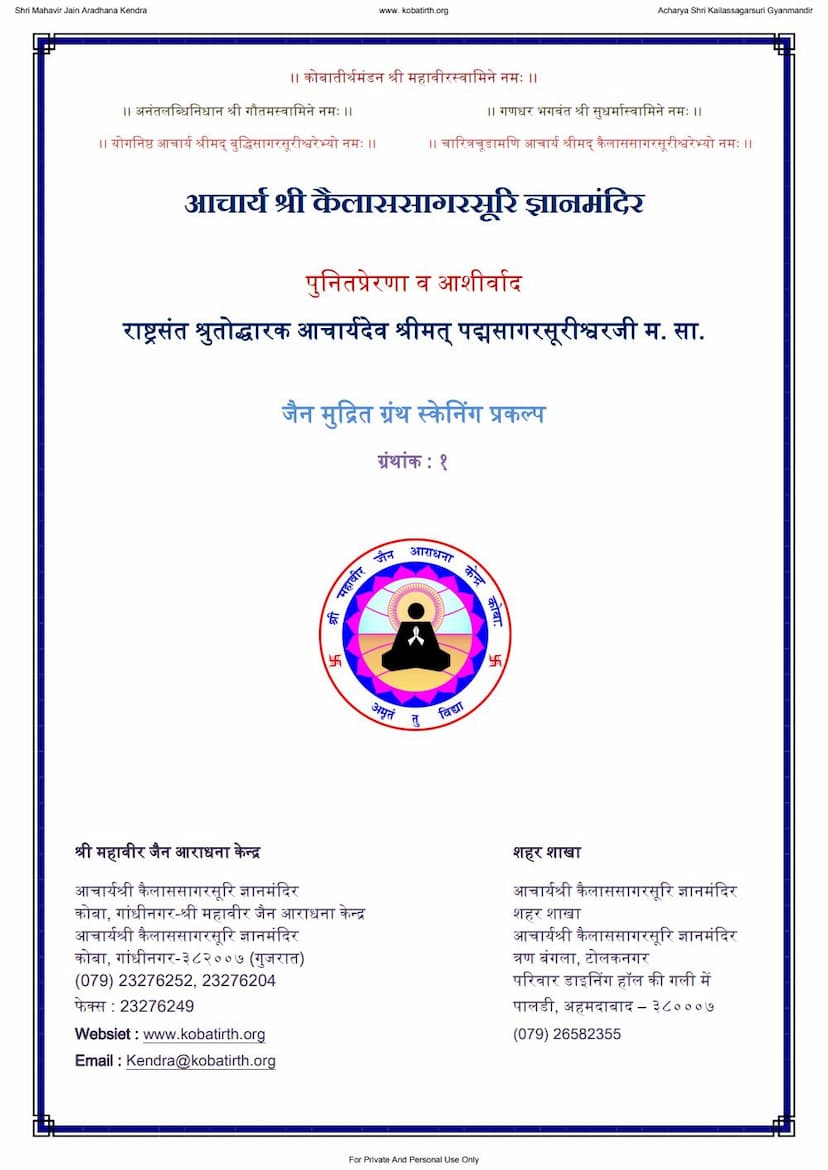Manusmruti
Added to library: September 2, 2025

Summary
Here's a comprehensive summary of the provided Jain text based on the content of the pages you shared. It's important to note that the text is primarily a detailed table of contents and introductory material for a Sanskrit text titled "Manusmriti" with the commentary of Bhatta Medhatithi, edited by J.R. Gharpure. The pages themselves do not contain the actual Jain canonical texts but rather information about a Hindu legal text. However, within the context of Jain education, the presence of this text in a Jain archive might be for comparative study of legal and ethical systems or for historical documentation.
Summary of the Provided Material (Contextually Related to Jain Studies):
The provided pages (1-43) are from the Manusmriti, a foundational text of Hindu law and dharma, with the Bhashya (commentary) of Bhatta Medhatithi. The publication details indicate it was edited by J.R. Gharpure and first published in 1920. The material originates from the Shri Mahavir Jain Aradhana Kendra, Acharya Shri Kailassagarsuri Gyanmandir, suggesting its inclusion within a Jain institutional collection.
Key Aspects of the Manuscript and its Contents (as revealed by the pages):
- Title: Manusmriti (also referred to as Manavdharma Shastra).
- Commentary: Bhatta Medhatithi's Bhashya.
- Editor/Publisher: J.R. Gharpure, B.A. LL.B. (Hons.), Pleader, High Court, Fellow of the University of Bombay.
- Publication Year: 1920.
- Institutional Origin: Shri Mahavir Jain Aradhana Kendra, Acharya Shri Kailassagarsuri Gyanmandir. This indicates the text is part of a Jain library's collection, likely for academic or comparative purposes, as Manusmriti is not a Jain scripture itself.
- Comprehensive Table of Contents (Vishayanukramanika): The majority of the pages (starting from page 7) present a detailed chapter-wise and section-wise index of the Manusmriti. This index is in Sanskrit and outlines the vast array of topics covered in the text, including:
- Cosmogony and Creation: Origin of the universe, Brahma, various elements, and beings.
- Social and Legal Order: Concepts of Dharma, Varnas (Brahmin, Kshatriya, Vaishya, Shudra), their duties, legal systems, marriage laws, sacraments (Samskaras), family law, inheritance, criminal law, punishments, and social conduct.
- Ashramas (Stages of Life): Duties related to Brahmacharya (student life), Grihastha (householder life), Vanaprastha (forest dweller), and Sanyasa (asceticism).
- Ethical and Moral Principles: Conduct, virtues, vices, purification rituals (Shuddhi), penances (Prayashchitta), and the importance of scriptures and tradition.
- Governance and Royal Duties: Laws concerning kings, administration, justice, and statecraft.
- Daily Life and Rituals: Rules for daily conduct, purity, dietary laws, and religious practices.
Relevance in a Jain Context (Implied):
While Manusmriti is a Hindu text, its presence in a Jain institution's archive might suggest:
- Comparative Religious and Legal Studies: Jain scholars and institutions often study other religious and legal traditions for understanding historical context, philosophical parallels, and societal evolution. Manusmriti, being a significant legal and social treatise in India, would be valuable for such comparative analysis.
- Historical Documentation: It might represent a historical acquisition or a significant text in the broader cultural milieu of ancient India that influenced or interacted with Jain traditions.
- Understanding Social Norms: Manusmriti details the social structure and norms of ancient India, which would have been prevalent during the period when Jainism was also developing and flourishing, offering insights into the social environment.
In Summary:
The provided text is a meticulously detailed index and partial introductory commentary on the Manusmriti, edited by J.R. Gharpure. It showcases the extensive scope of the Manusmriti, covering creation, social structures, legal codes, ethical conduct, and stages of life within the Hindu tradition. Its presence in a Jain institution's archive points towards its value for comparative study, historical research, or understanding the broader socio-religious landscape of India. The text itself does not contain Jain scriptures.